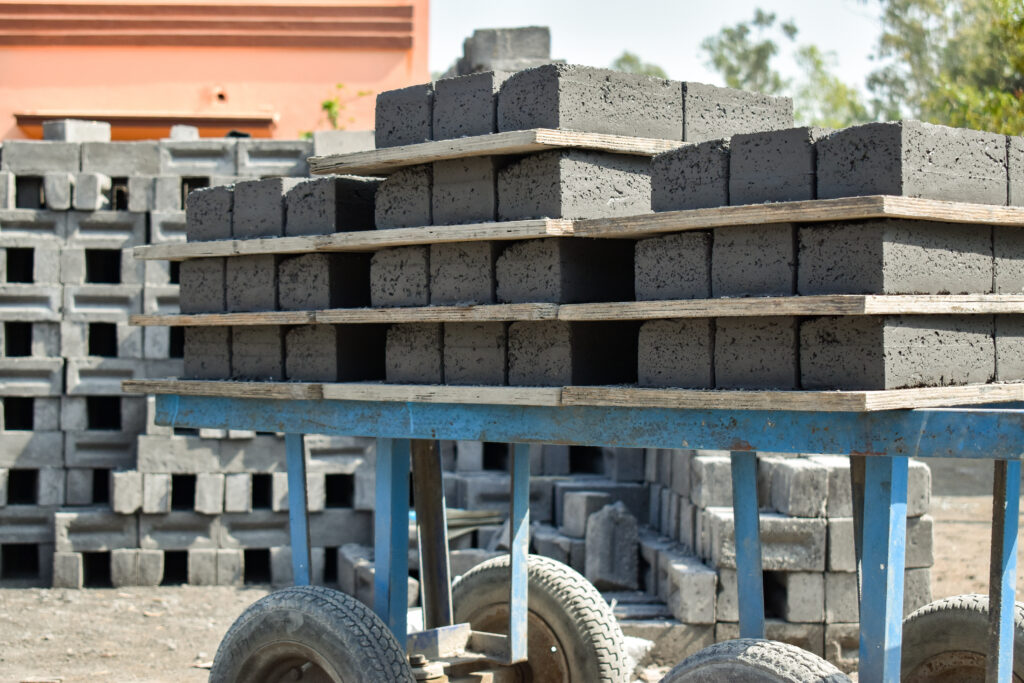Project Type: Green Brick Manufacturing
Vintage: 2018-2020
Why is green brick manufacturing important?
The World Green Building Council and green building standard-setting organizations in the U.S. and the UK encourage corporations, academic institutions and governments to help reduce the environmental impact of our built environment by rethinking their new buildings and building renovations, including “building with low-carbon materials.” The Green Bricks for Residential and Commercial Buildings project contributes to these aims by supporting energy efficient production of bricks and concrete blocks, and by utilizing renewable local agricultural biomass in place of traditional fossil fuels. To improve the impact of building materials, green building standards like LEED and BREEAM promote the use of building materials that recycle or reuse other waste materials in place of extracting or producing new materials. This uses less energy overall and emits less carbon dioxide into the atmosphere.
In addition to using energy efficient manufacturing processes, the Green Bricks for Residential and Commercial Buildings Project supports the use of waste materials by incorporating fly ash waste from thermal power plants in place of conventional raw materials. Fly ash can be safely included in construction materials, and its use in this way prevents the waste material from being dumped.
What is green brick manufacturing?
The use of Autoclaved Aerated Concrete (AAC) blocks and fly ash bricks displaces the more common clay bricks that are manufactured through the Bull’s Trench Kiln process. This process uses coal and fuel oil as sources of energy, uses more energy overall, and emits more greenhouse gasses than the production of AAC blocks and fly ash bricks.
The manufacturing of the AAC blocks and fly ash bricks uses renewable local biomass as a source of energy and uses less energy than clay bricks. Additionally, these materials result in a building product with a higher insulation value compared to conventional alternatives, which in turn is likely to reduce the energy consumption of buildings over their lifespans. The use of these AAC blocks and fly ash bricks results in significantly less carbon dioxide and other greenhouse gasses.
Benefits of the project
- The production of concrete blocks and fly ash bricks does not require sintering or kiln heating, thus eliminating the burning of fossil fuels needed for this process in traditional clay brick production and allowing for a much more energy efficient manufacturing process
- The concrete blocks and fly ash bricks are manufactured with charcoal briquettes from agricultural wastes – a renewable, local biomass energy source – displacing the coal and fuel oil used to manufacture conventional clay bricks in the region
- The blocks and bricks incorporate recycled content in the form of fly ash, an industrial waste captured from thermal power plants, which would otherwise be dumped and unutilized
- The high insulating value of the concrete blocks and fly ash bricks contributes to lower energy consumption in buildings, as compared to clay bricks
How is the project validated and verified?
This project has been validated and verified to the Verified Carbon Standard according to a methodology that applies specifically to process improvements and energy efficiency in the manufacturing of bricks. The verification confirms, annually, the amount of energy, and the source of energy, used for manufacturing, then calculates the associated greenhouse gas emissions, and conveys the total reduction in emissions in comparison to a baseline for the most commonly used conventional clay bricks.
How to get involved
To learn more about the project, and how to find synergies with your green building and climate goals, please contact us.
Read less.





